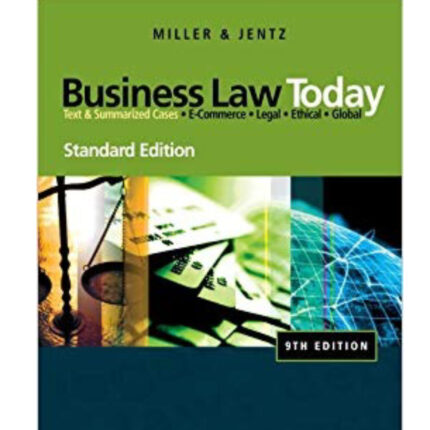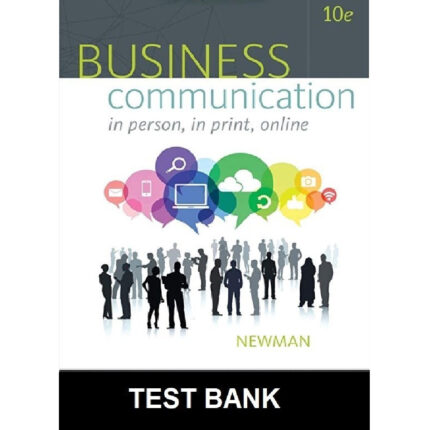Global Business International Edition 2nd Edition by Mike Peng – Test Bank
Chapter 11—Alliances and Acquisitions
TRUE/FALSE
1. Equity-based alliances include co-marketing, research and development, contracts, turnkey products, strategic suppliers, strategic distributors, and licensing/franchising.
ANS: F PTS: 1 DIF: Easy OBJ: 11.1
NAT: AACSB: Tier 1 Analytic; Tier 2 Creation of Value
2. A joint venture (JV) is a form of equity-based alliance.
ANS: T PTS: 1 DIF: Moderate OBJ: 11.1
NAT: AACSB: Tier 1 Reflective Thinking; Tier 2 Strategy
3. A licensing is a form of equity-based alliance.
ANS: F PTS: 1 DIF: Moderate OBJ: 11.1
NAT: AACSB: Tier 1 Reflective Thinking; Tier 2 Strategy
4. Strategic investments in an equity-based alliance involve one partner investing in another, while cross-shareholding involves both partners investing in each other.
ANS: T PTS: 1 DIF: Easy OBJ: 11.1
NAT: AACSB: Tier 1 Reflective Thinking; Tier 2 Strategy
5. Acquisitions are more common than mergers.
ANS: T PTS: 1 DIF: Easy OBJ: 11.1
NAT: AACSB: Tier 1 Reflective Thinking; Tier 2 Strategy
6. Many firms establish alliances with competitors.
ANS: T PTS: 1 DIF: Easy OBJ: 11.1
NAT: AACSB: Tier 1 Reflective Thinking; Tier 2 Strategy
7. Since integration within alliances is usually not as tight as acquisitions, antitrust authorities have a higher likelihood of approving alliances.
ANS: T PTS: 1 DIF: Moderate OBJ: 11.1
NAT: AACSB: Tier 1 Analytic; Tier 2 Legal Responsibilities
8. Formal government policies regarding entry mode requirements for new firms are generally becoming more conservative.
ANS: F PTS: 1 DIF: Moderate OBJ: 11.1
NAT: AACSB: Tier 1 Reflective Thinking; Tier 2 Legal Responsibilities
9. Overall, alliances have emerged as great instruments of real options because of their flexibility to sequentially scale up or scale down the investment.
ANS: T PTS: 1 DIF: Moderate OBJ: 11.1
NAT: AACSB: Tier 1 Reflective Thinking; Tier 2 Creation of Value
10. One of the disadvantages of having strategic alliances is the potential of partner opportunism.
ANS: T PTS: 1 DIF: Moderate OBJ: 11.1
NAT: AACSB: Tier 1 Reflective Thinking; Tier 2 Creation of Value
11. It is important for managers to have collaborative relationship skills since alliances are more about collaboration than pure competition.
ANS: T PTS: 1 DIF: Easy OBJ: 11.1
NAT: AACSB: Tier 1 Diversity; Tier 2 HRM and Strategy
12. The “imitability” of an alliance is based on the trust and understanding between the partners.
ANS: T PTS: 1 DIF: Moderate OBJ: 11.1
NAT: AACSB: Tier 1 Diversity; Tier 2 HRM and Strategy













Reviews
There are no reviews yet.